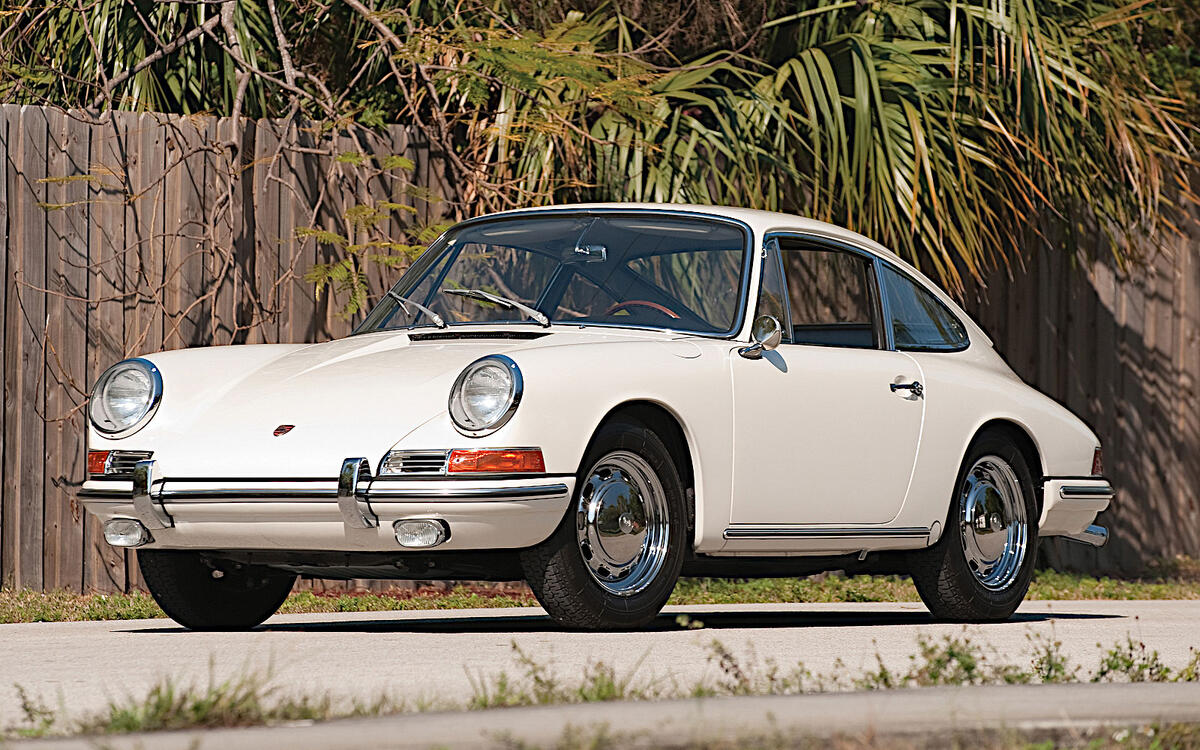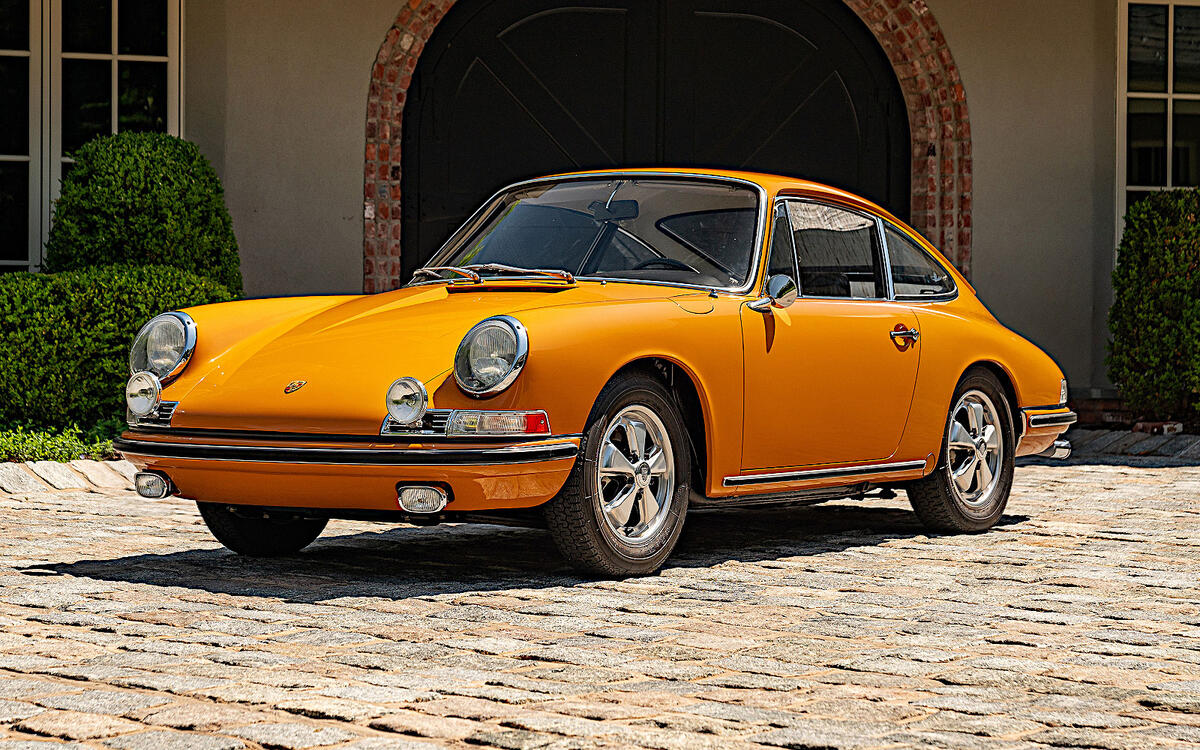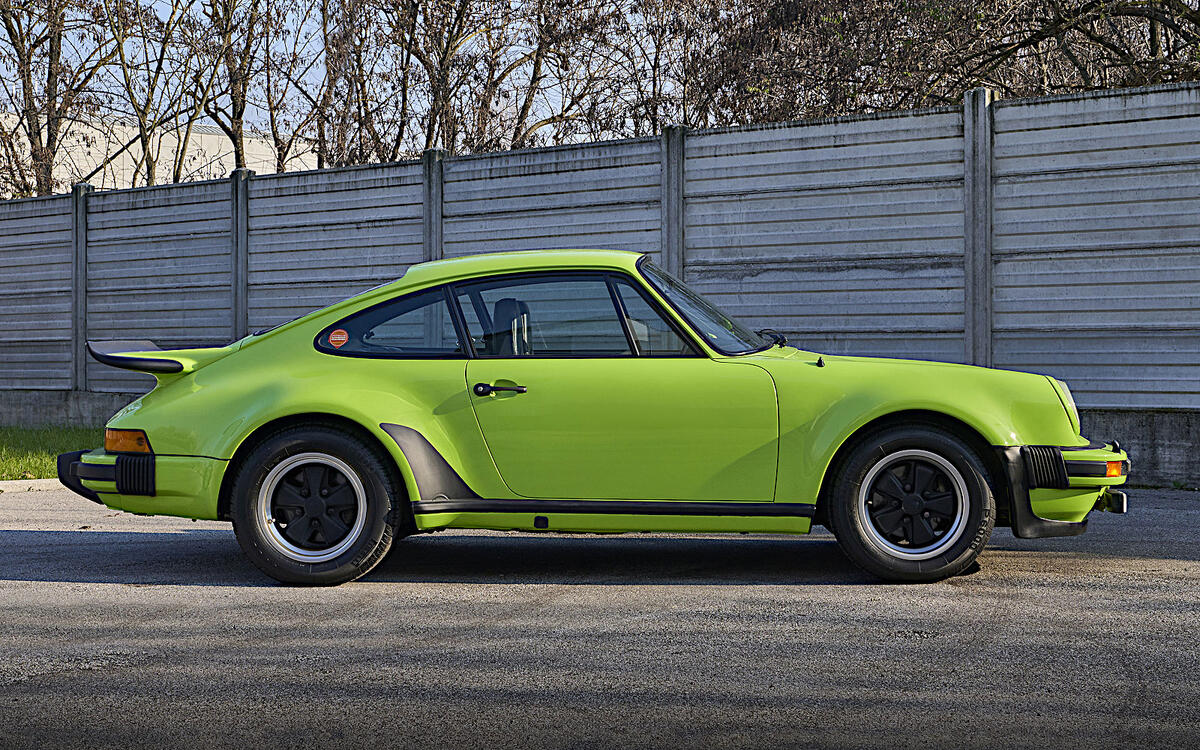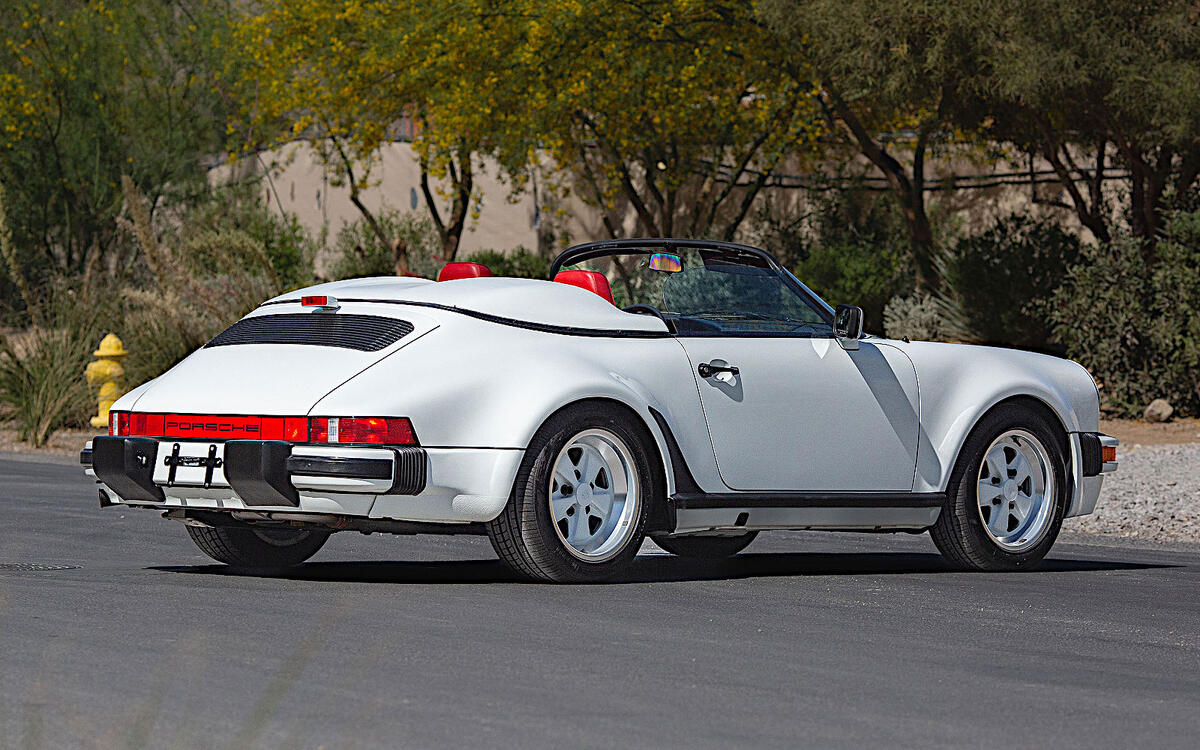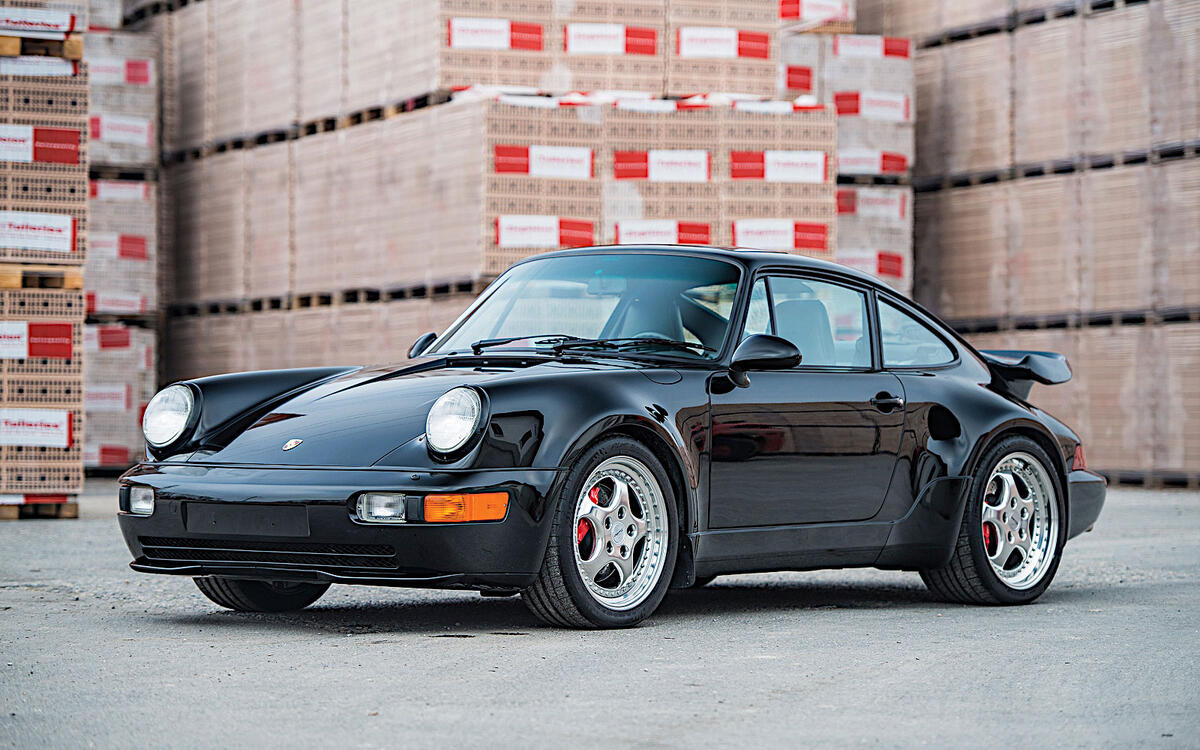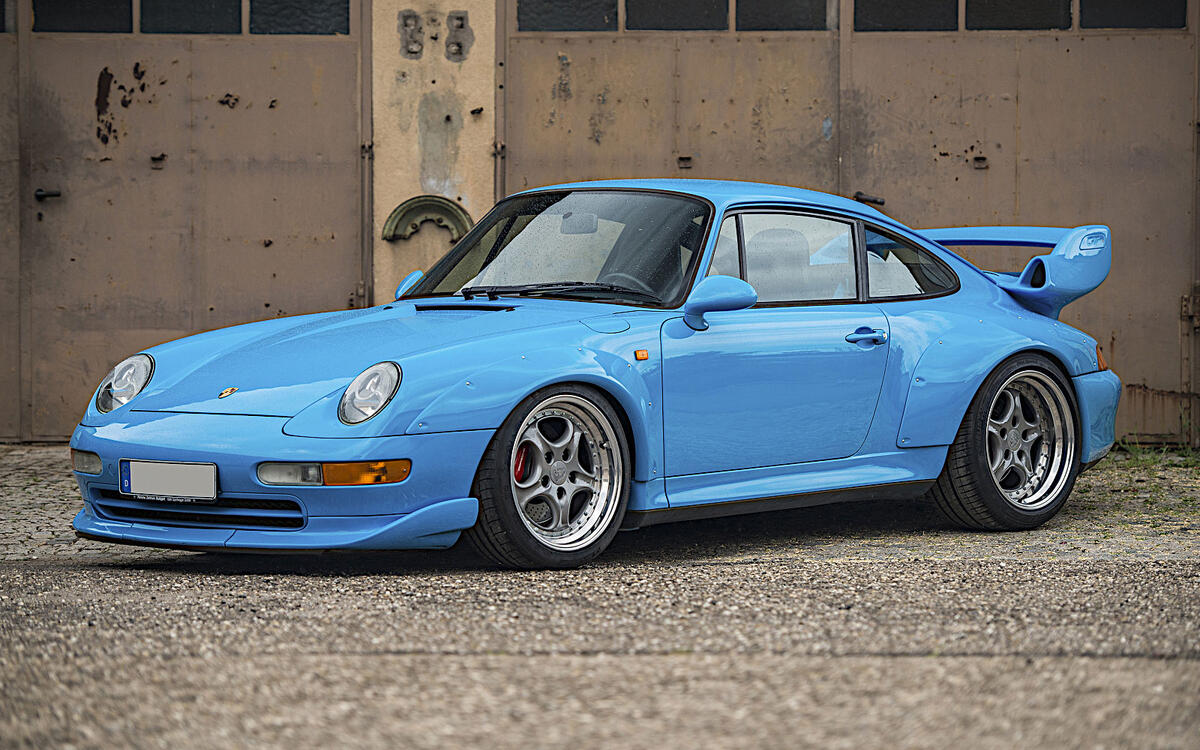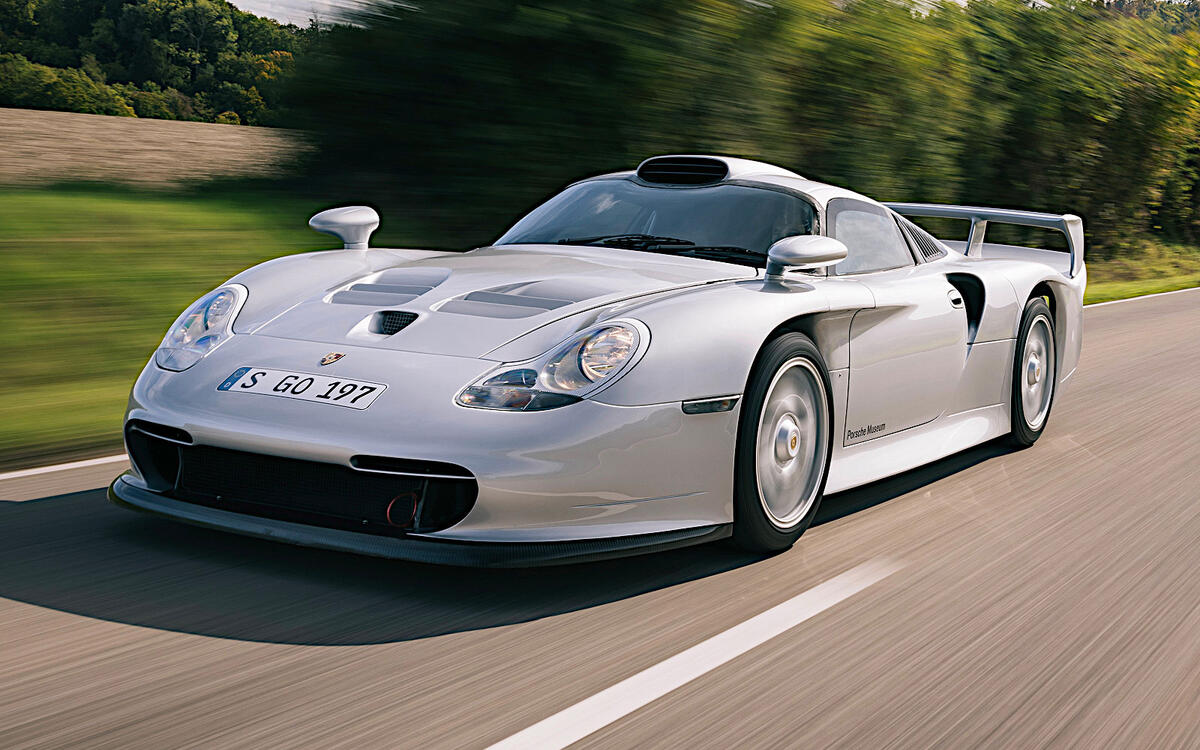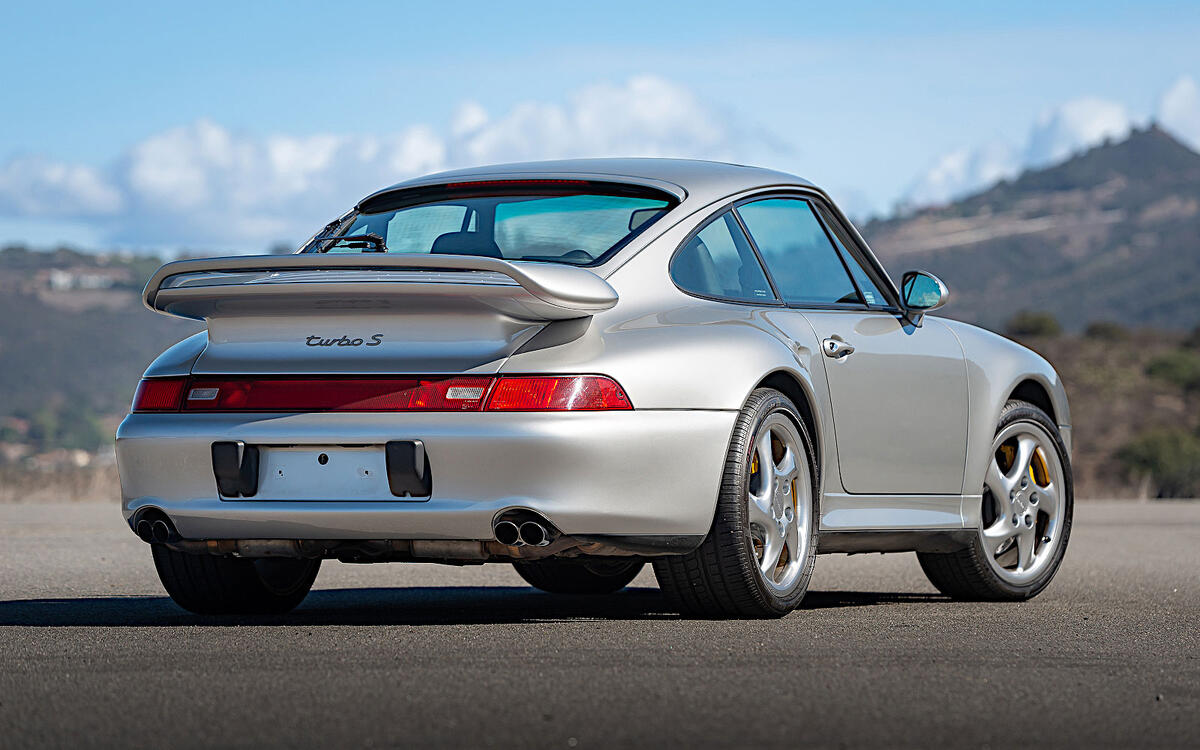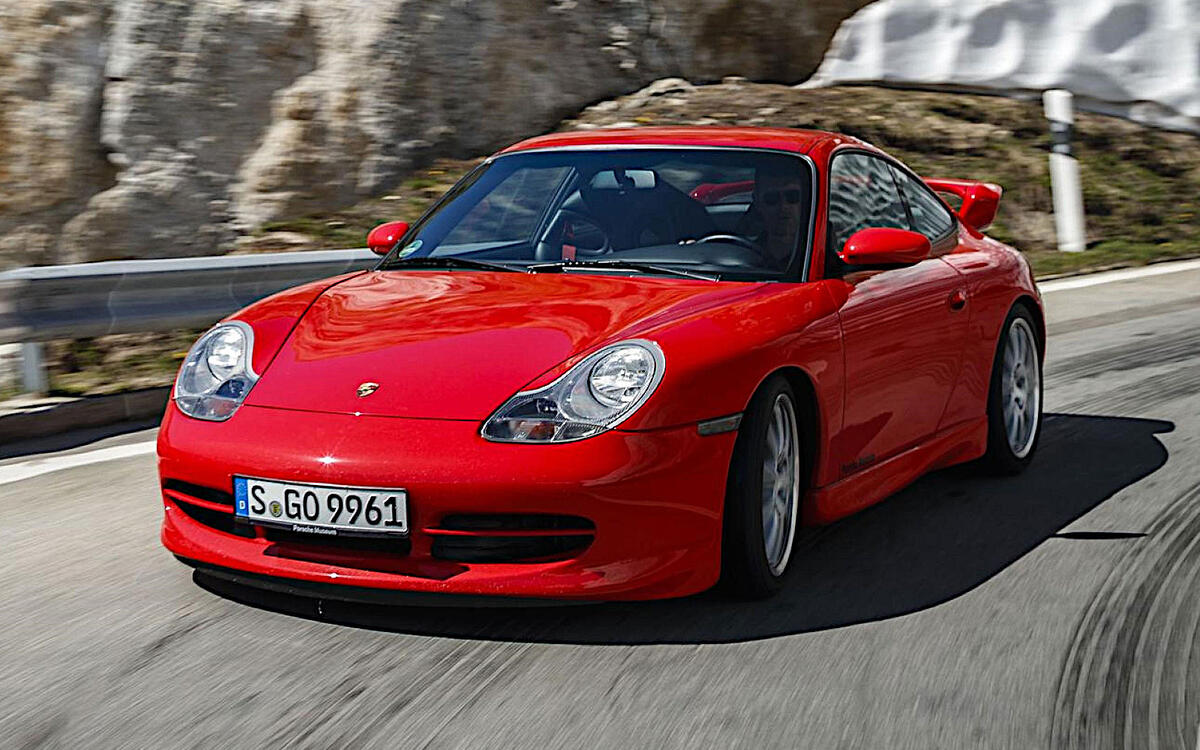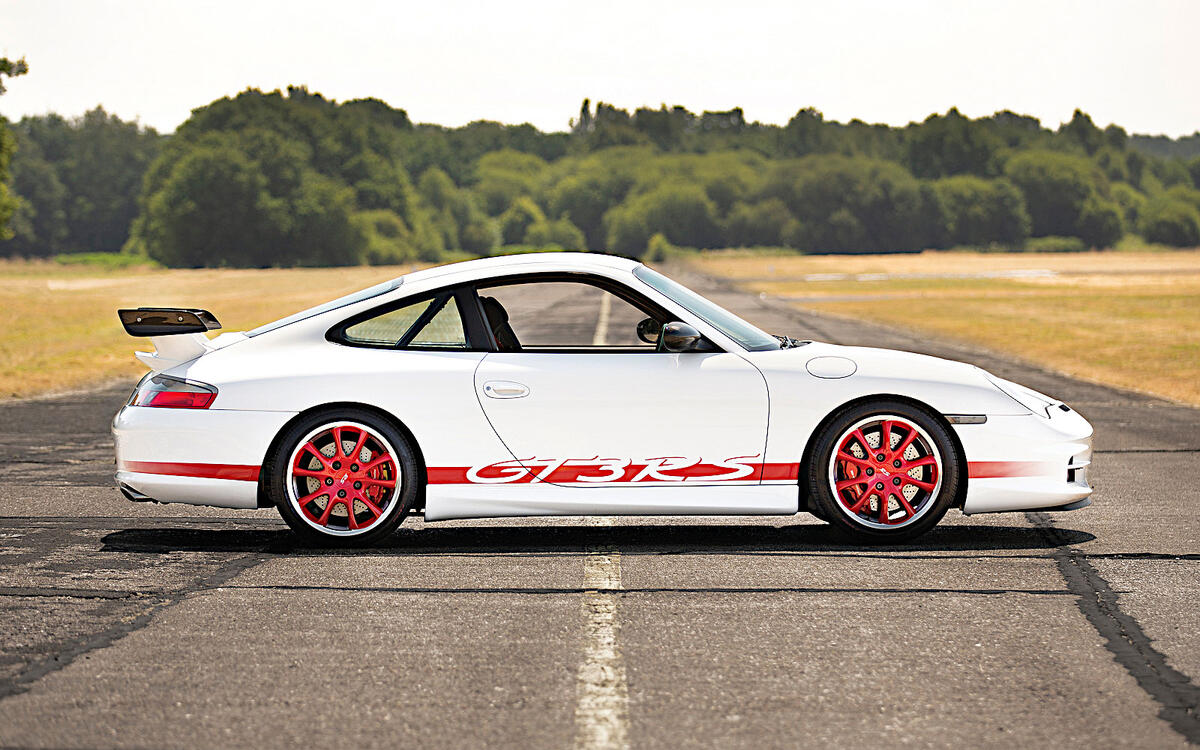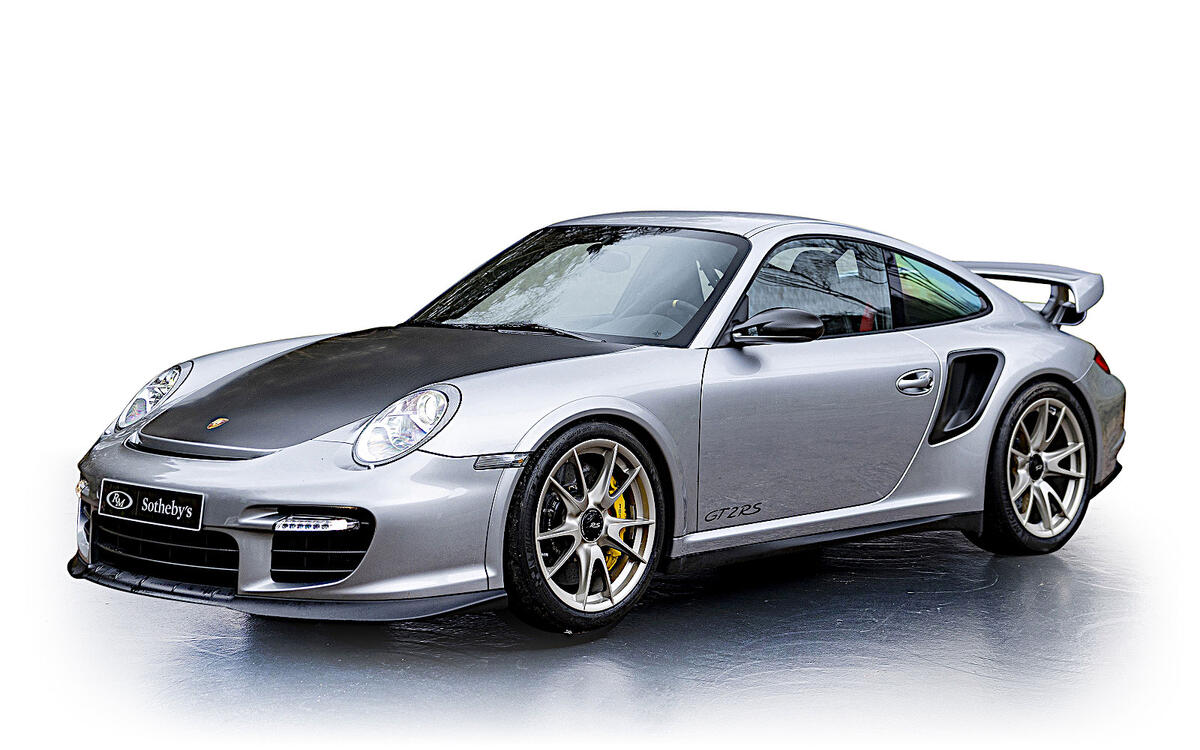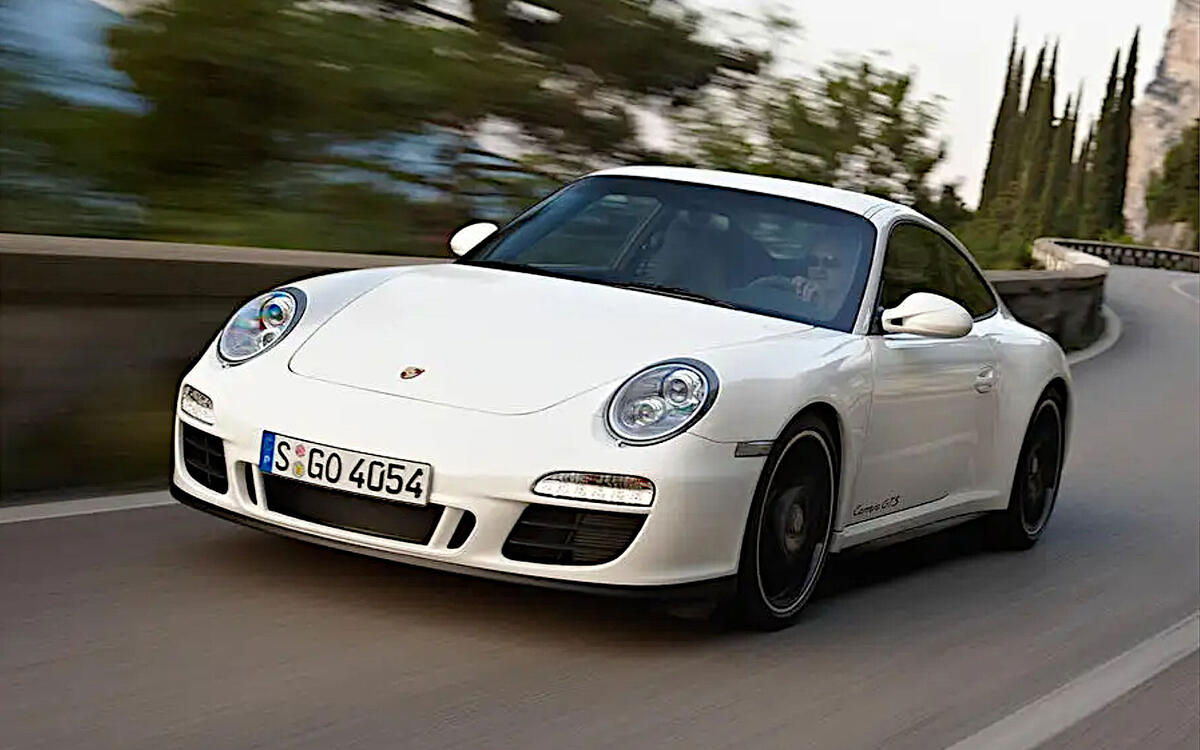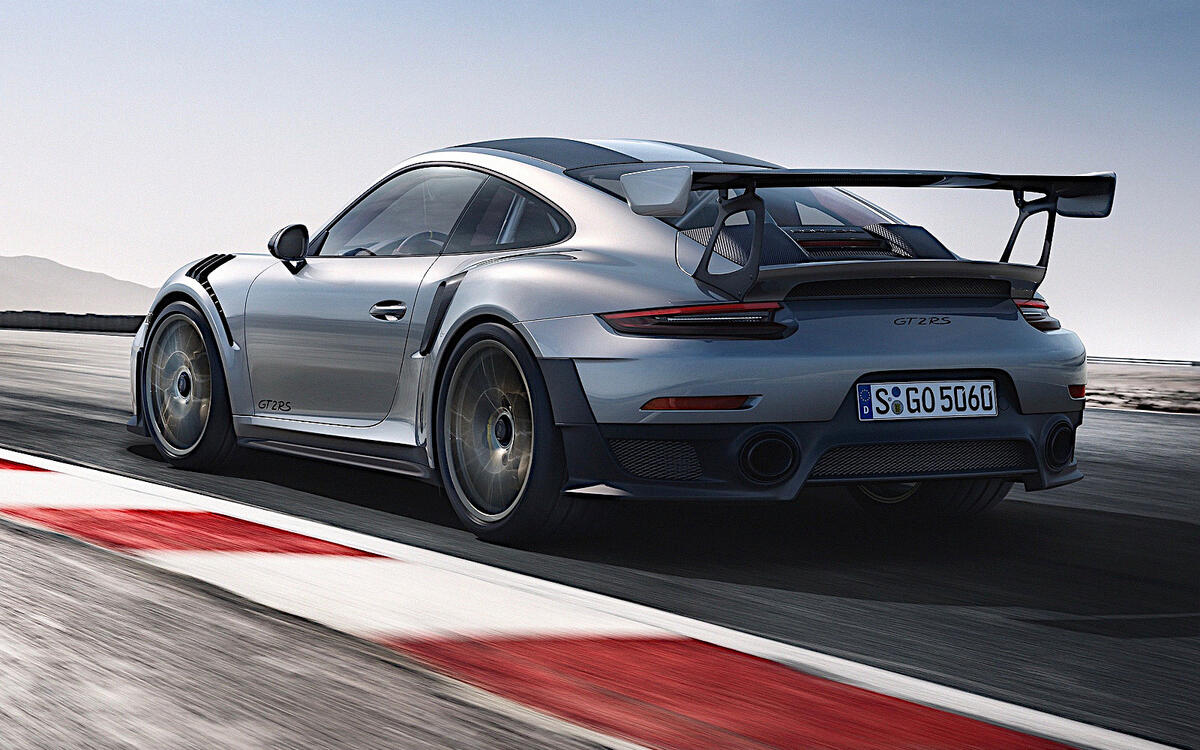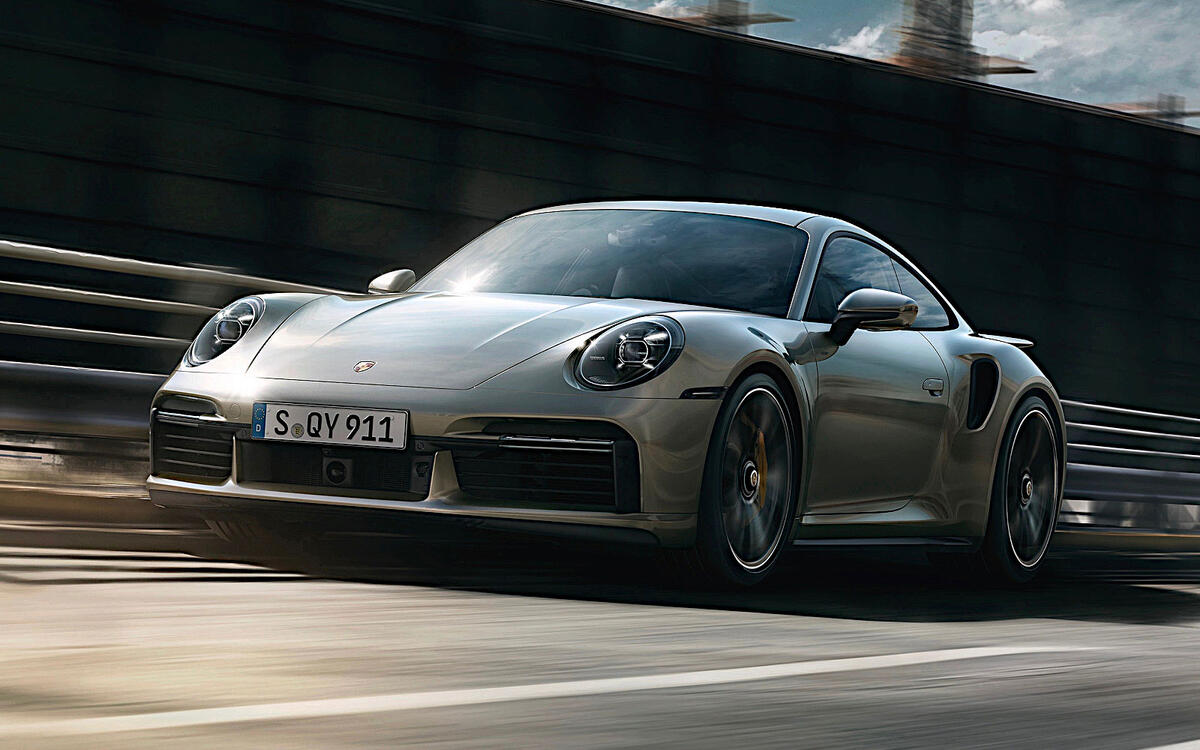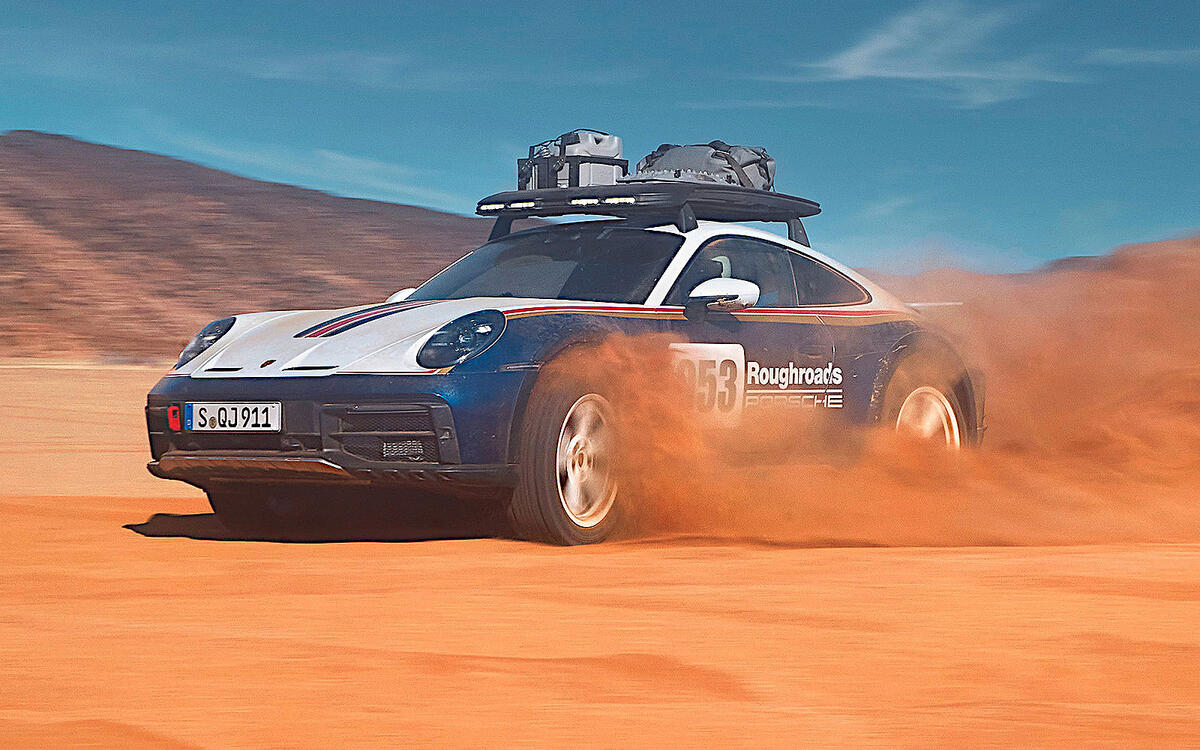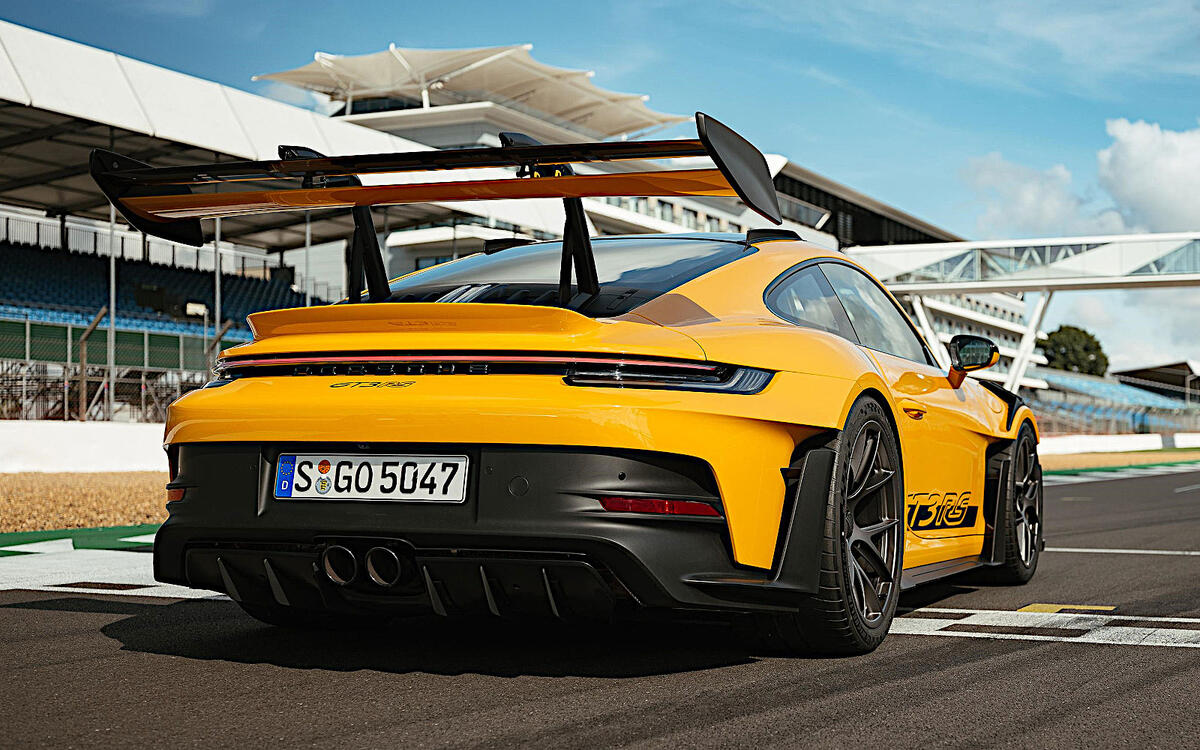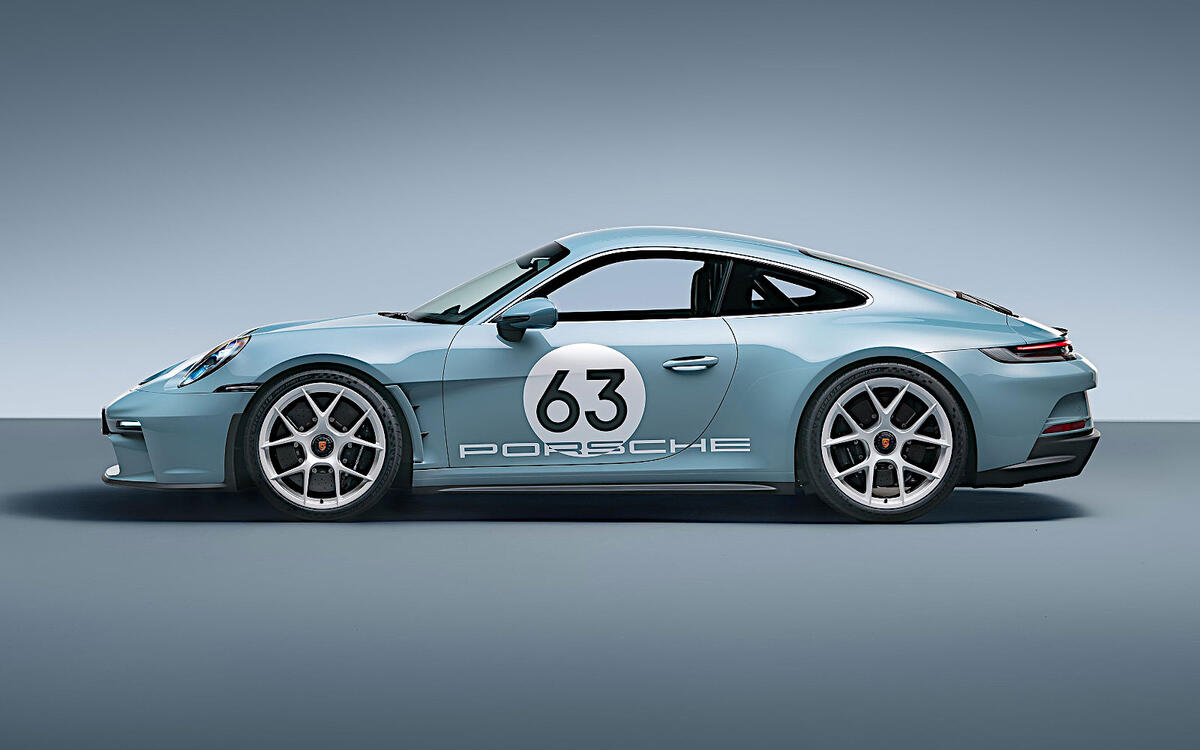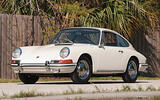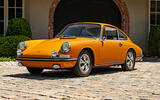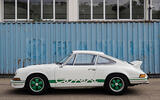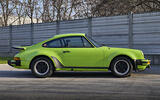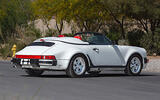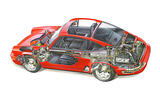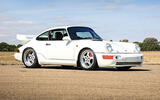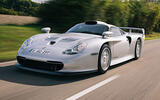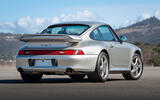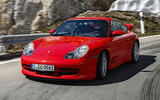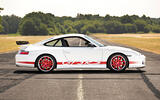 Slide of
Slide of
The Porsche 911 was revealed – as the 901 – at the Frankfurt Motor Show in September 1963, and went on sale the following year with the more familiar name.
In the six decades since then, there have been many 911s which could be called extreme, either in overall terms or in the context of their time.
Acknowledging that there are other possible candidates, we’ve compiled a list of 20 (all designed for road use – no race or rally cars here) and present them to you in order of the years they first became available
 Slide of
Slide of
Porsche 911 (1964)
It stands to reason that the first 911 was also the most extreme example to date. The ‘64 model was very different from anything Porsche is building today, but two features have remained consistent – the basic shape, drawn by the company founder’s grandson, Ferdinand Alexander ‘Butzi’ Porsche (1935-2012), and a rear-mounted flat-six engine.
That engine had a capacity of 2.0 litres and produced around 130bhp, making it considerably more powerful than Porsche’s other model in those days, the 356. Porsche quotes a 0-62mph time of 9.1 seconds and a top speed of just over 130mph – very modest figures now, but pretty startling for the mid 1960s.
 Slide of
Slide of
Porsche 911 S (1966)
The 911 reached a new height in 1966 when Porsche uprated the 2.0-litre six so that it produced 160bhp. The revised engine was fitted to a new variant called the 911 S.
To cope with the extra performance, Porsche fitted ventilated brake discs. These had not previously been used on any 911, and nor had the now famous Fuchs ‘five-leaf’ forged alloy wheels.
 Slide of
Slide of
Porsche 911 Carrera RS 2.7 (1973)
The flat-six engine was enlarged to 2.2 litres in 1969, 2.4 litres in 1971 and then 2.7 litres in 1973, in which form it was fitted to the Carrera RS. With 210bhp on tap, and weighing under 1000kg (less than the 1964 car), this was the best-performing 911 so far.
Although the Carrera RS mostly looked very similar to all previous 911s, it had a distinguishing feature in the form of a large rear spoiler. Porsche referred to this internally as the ducktail, a name which soon spread into the wider world and has been used ever since. They are staggeringly valuable today; one is up for sale in the UK today for £450,000
 Slide of
Slide of
Porsche 911 Turbo (1975)
The first turbocharged 911 was unveiled at the 1974 Paris Motor Show, and went on sale the following year. It was sold in most markets as the 911 Turbo, but in North America as the 930.
Boosted by a compressor, the engine, now measuring 3.0 litres, produced 256bhp, around double the output of the first 911. Two years later, it was enlarged to 3.3 litres, in which form it produced 296bhp, or a more impressive-sounding 300PS in metric units. All that power, delivered in a big surge as the turbo spooled up, meant that the car had to be handled with some care, especially in the wet.
 Slide of
Slide of
Porsche 911 Speedster (1988)
When talking about 911s, it’s tempting to focus almost entirely on performance and power outputs, but in 1988, the final year of what’s known as the G Series, Porsche introduced a radical new body style.
With a shorter than normal windscreen, and a manually operated roof which could be stowed away under a large plastic cover behind the passenger compartment, the Speedster had the most extreme 911 body style yet, though it echoed one used many years earlier for the 356. Only 2102 examples were built at the time, but the idea has resurfaced several times since then.
 Slide of
Slide of
Porsche 911 Carrera 4 (1988)
After turbocharging, the next major mechanical development in 911 history was the introduction of four-wheel drive. In fact, for six months, you couldn’t buy a 911 with anything else. The Carrera 4 was the first model of the 964 generation (which Porsche said was 85 percent different from its immediate predecessor), and went on sale in 1988.
The Carrera 2, which drove through the rear wheels only, as all 911s had done for a decade and a half, did not appear until 1989.
 Slide of
Slide of
Porsche 911 Carrera RS 3.8 (1993)
Few 911s of the 964 generation had an engine larger than 3.6 litres. The exceptions, whose flat-sixes had slightly larger bores and measured 3764cc, were called Carrera RS 3.8. Porsche built only 55 examples, though this does not include any of the RSR 3.8s, which we’re bypassing here because they were intended only for use in racing.
The RS 3.8 featured in the 2023 movie Transformers: Rise of the Beasts. Five cars were used for filming, but Porsche – not wanting to risk damage to one of its rarest models – provided replicas instead.
 Slide of
Slide of
Porsche 911 Turbo S 3.6 (1994)
The most powerful exclusive turbocharged 964 model was produced in very small numbers right at the end of the generation. Based on the existing 3.6-litre Turbo, it had a larger compressor, among many other modifications, and a correspondingly higher output of 380bhp.
Of the 93 built, 76 featured Flachbau, or ‘flat-nose’ bodywork, with the headlights recessed into the front wings. The remaining 17, known as the Package cars, had conventional headlights, and were sold only in the US. Despite looking more standard than the Flachbau versions, they were the rarest and most exclusive of all the 964s.
 Slide of
Slide of
Porsche 911 GT2 (1995)
GT2 is a class in sports car racing which requires several road-going ‘homologation special’ examples of a particular model to be built before the car is allowed to take part. Four-wheel drive is forbidden, which was a problem for Porsche because by the mid 1990s all 911 Turbos had it. The solution was to create the rear-wheel drive GT2, originally sold simply as the GT.
With fewer transmission parts, along with other weight-saving measures, the GT2 was considerably lighter than the regular Turbo, which of course gave it far better performance, if less traction. Porsche continued to produce GT2s in later generations for more than 20 years.
 Slide of
Slide of
Porsche 911 GT1 Strassenversion (1997)
Like the GT2, the GT1 was created in order to compete in motorsport, although in this case the racer shared little more than a name and a few components with the famous road car. It was designed entirely for competition, but Porsche had to offer a few road-legal variants for sale.
The Strassenversion (German for ‘street version’) was slightly detuned and had full road equipment, but it was still a formidable device on the public highway. It was also the first 911 available to the public with a water-cooled engine, and so far the only one in which the engine was mounted ahead of the rear axle. At least one GT1 built for competition has been converted for road use, and can therefore be used on the street even though it is not a street version.
 Slide of
Slide of
Porsche 911 Turbo S (1997)
The 911 Turbo of the 993 generation had a 3.6-litre engine boosted by two compressors, which resulted in a power output of 402bhp. This was impressive at first, but it came to seem slightly less so when Porsche produced a small number of Turbo S variants towards the end of the run.
Distinguished by yellow brake calipers and a larger rear wing, the Turbo S also had an uprated engine. In the US, reviewers responded very positively to the performance of the 424bhp car, so we can only imagine how they would have reacted to the 444bhp available in other markets.
 Slide of
Slide of
Porsche 911 GT3 (1999)
Similar in concept to the GT2, the first GT3 was a homologation special developed to allow the 911 to compete in a class of sports car racing. This time, turbochargers were not permitted, so the GT3 had a naturally-aspirated 355bhp 3.6-litre engine derived, according to Porsche from the turbo unit used in the Le Mans-winning GT1.
To keep weight down, equipment was minimal, and in the interests of tunability Porsche made the anti-roll bars, the rear wing and even the gear ratios adjustable.
 Slide of
Slide of
Porsche 911 GT3 RS (2003)
Porsche had already used the GT3 and RS badges to denote high-performance models, so the 2003 car decorated with both of them was bound to be something special. Sure enough, the GT3 RS of that year had a rear wing, engine cover and brake discs made of carbonfibre, along with – for even more weight saving – polycarbonate windows.
In a nod to the past, Porsche also made the new model look slightly like the Carrera 2.7 RS of 30 years earlier, for example by adding prominent decals on the lower reaches of each side.
 Slide of
Slide of
Porsche 911 GT2 RS (2010)
The first 911 to wear GT2 RS badging was an upgraded version of the already formidable 997-generation GT2. By increasing boost pressure, Porsche raised the output of the 3.6-litre twin-turbo engine by nearly 90bhp to 612bhp, which in turn gave the car a top speed of 205mph and a 0-62mph time of 3.5 seconds.
“Legalised insanity,” we called it in a 2010 review, adding that the RS offered “a driving experience you’ll remember forever,” though we also admitted that we preferred the quicker throttle response and more exciting engine note of the contemporary GT3 RS.
 Slide of
Slide of
Porsche 911 GTS (2011)
At first sight, there appears to be nothing at all extreme about the GTS, introduced late in the 997 generation, but there’s a case for saying it was exactly that. Described by Porsche as “the link between the Carrera, Turbo and GT models”, it was more powerful (402bhp) than any of the former – which also gave it a better 0-62mph and top speed – and far more affordable than anything in the second or third categories.
There is also a school of thought that it was the most enjoyable 911 of its era to live with, at least once the short-lived thrill of startling acceleration provided by the more powerful versions had worn off. We called it “sublime” and “quite possibly all the 911 you’ll ever need”.
 Slide of
Slide of
Porsche 911 GT2 RS (2017)
The most recent GT2 is the only one offered solely in RS form. It’s also the most powerful production 911 yet, with a 3.8-litre twin-turbo engine producing 690bhp, the highest output of any road-going 911.
Its top speed is also the highest, at 211mph. With the help of a seven-speed PDK twin-clutch semi-automatic gearbox, its 0-62mph time is quoted by Porsche as being 2.8 seconds. No other rear-wheel drive 911 can match this, though as we’ll see a later four-wheel drive model is able to do the same job slightly more quickly.
 Slide of
Slide of
Porsche 911 Turbo S (2020)
Porsche has described the 992-generation Turbo S as “the fastest 911 ever”. How true this is depends on how you define the word ‘fast’. Compared with the GT2 RS, the Turbo S is heavier, its 3.7-litre twin-turbo engine is less powerful (641bhp) and it’s slightly slower at the top end (205mph).
However, it has four-wheel drive, which the GT2 RS doesn’t, and that makes a difference to the 0-62mph time. Several figures have been quoted, but Porsche claims 2.7 seconds (assuming the optional Sport Chrono Package is fitted), or a tenth less than the GT2 RS can achieve.
 Slide of
Slide of
Porsche 911 Dakar (2022)
In almost every way except straightline performance, the Dakar is the most extreme road-going 911 there has ever been. Its name refers to Porsche’s victory in the 1984 Dakar Rally with a 953, a heavily modified variant of the then-current 911.
The production car has a top speed of only around 150mph, but its greater (and variable) ride height, underbody protection and transmission modes mean that it’s also a serious off-roader. Customers can even specify Pirelli Scorpion tyres which were designed to make it even better in conditions most 911s will never see.
 Slide of
Slide of
Porsche 911 GT3 RS (2022)
Progress being what it is, the current GT3 RS is the most capable of all the 911 GT3s to date. Typically, it’s one of the lightest cars in today’s ranging, weighing 1450kg, and inevitably it’s also the most powerful. The maximum output of its naturally-aspirated 4.0-litre engine is 518bhp, 25bhp up on the previous GT3 RS.
Power isn’t the whole story, of course. Porsche says it did 250 hours of wind tunnel work on the car, during which it found an extra 40kg of aerodynamic downforce.
 Slide of
Slide of
Porsche 911 S/T (2023)
Porsche created the S/T to celebrate 60 years of the 911. It uses the same 518bhp 4.0-litre as the GT3 RS, but in order to maintain a classic look (which can be emphasised be specifying the optional Heritage Design Package, as pictured here) it does not have that car’s prominent rear wing. Also unlike the RS, it’s optimised for road rather than track use.
Though not the most extreme 911 in performance terms, it does exceed all the other current versions in terms of cost. At the time of writing, its list price in the UK is £231,600 (well over double the £97,000 of the entry-level Carrera), while its MSRP in the US is $290,000.
Access control:
Open


